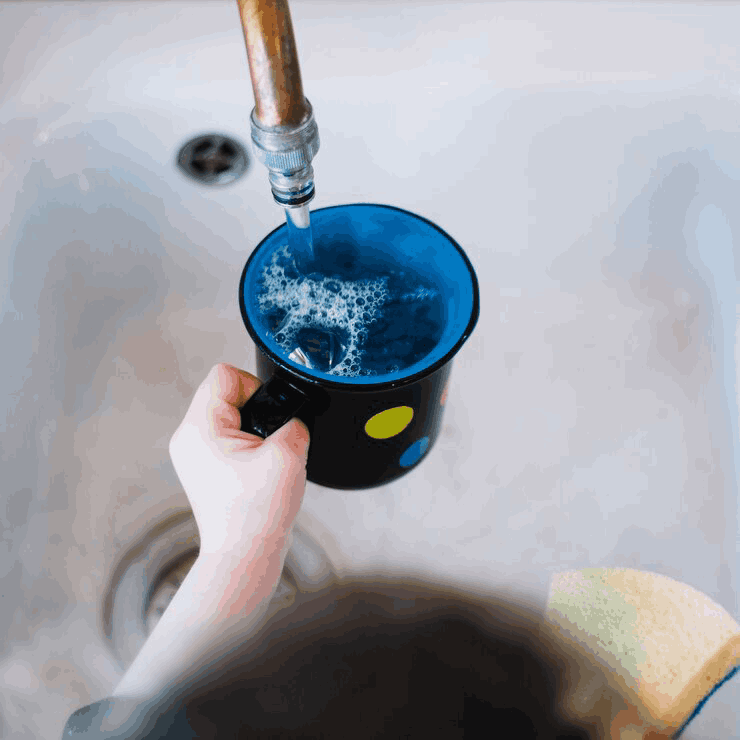Understanding the Causes of Discolored Water
Have you ever turned on your faucet only to find that the water flowing out is a strange color? Whether it’s brown, yellow, green, or even black, discolored water can be alarming. Not only does it look unappealing, but it can also make you wonder if it’s safe to drink or use. In this article, we’ll explore the common causes of discolored water, whether it’s harmful, and what you can do to fix it.
Why is my Water a Weird Color?
1. Sediment Buildup:
One of the most common reasons for discolored water is sediment buildup in your pipes. Over time, minerals like iron and manganese can accumulate in your plumbing system, causing your water to appear yellow, brown, or reddish-brown. Sediment buildup can occur in both old and new plumbing systems and is more common in areas with hard water.
2. Corrosion:
Corrosion of your plumbing system can also lead to discolored water. If your pipes are old or made of materials like iron or galvanized steel, they can rust and leach into your water supply, giving it a reddish or brownish tint. Corrosion is more common in older homes but can also occur in newer homes if the plumbing system is not properly maintained.
3. Algae Growth:
In some cases, green or blue-green water can be caused by algae growth in your plumbing system. This is more common in areas with warm climates or if your water sits stagnant for long periods of time. Algae growth is more common in outdoor plumbing systems but can also occur indoors if the conditions are right.
4. Presence of Organic Matter:
Sometimes, discolored water can be caused by the presence of organic matter in your water supply. This can include things like decaying vegetation or algae blooms in nearby lakes or reservoirs. Organic matter can cause your water to appear brown, yellow, or green and can give it a foul odor or taste.
Is Discolored Water Harmful?
The most pressing question when faced with discolored water is whether or not it’s safe to drink or use. In most cases, discolored water is not harmful to your health. However, it can indicate underlying issues with your plumbing system that should be addressed.
Potential Health Risks:
- Bacterial Contamination: While rare, discolored water can sometimes be a sign of bacterial contamination. If you notice a strange color or odor in your water, it’s best to have it tested to rule out any potential health risks. Bacterial contamination can cause illness if ingested, so it’s important to address the issue promptly.
- Heavy Metals: In some cases, discolored water can contain high levels of heavy metals like lead or copper, which can be harmful if ingested over time. If you’re concerned about the safety of your water, it’s a good idea to have it tested by a professional. Heavy metals can cause a range of health problems, including neurological damage, so it’s important to address the issue as soon as possible.
How do you Fix Discolored Water?
If you’re dealing with discolored water, there are a few steps you can take to fix the problem:
1. Flush Your Plumbing System:
Start by flushing out your plumbing system. Run cold water from each faucet in your home for a few minutes to help clear out any sediment or debris that may be causing the discoloration. Flushing your plumbing system can help remove built-up sediment and debris, improving the overall quality of your water.
2. Check Your Water Heater:
If the hot water is discolored but the cold water is clear, the problem may be with your water heater. Sediment buildup in your water heater can cause the water to become discolored. Try flushing your water heater to see if that helps. Flushing your water heater can help remove built-up sediment and debris, improving the overall quality of your hot water.
3. Replace Old Pipes:
If your plumbing system is old or corroded, you may need to replace some or all of your pipes to fix the problem. This can be a costly and time-consuming process, but it’s often necessary to ensure the safety and quality of your water. Replacing old pipes can help prevent future discoloration and improve the overall quality of your water.
4. Install a Water Filtration System:
Consider installing a water filtration system in your home to help remove impurities and improve the overall quality of your water. This can help prevent discolored water and ensure that your water is safe to drink. Water filtration systems come in a variety of types and sizes, so you can choose the one that best fits your needs and budget.
How do you Get Rid of Discolored Water?
In addition to fixing the underlying cause of the problem, there are a few things you can do to get rid of discolored water more quickly:

1. Run Cold Water:
If you notice discolored water, run cold water from the faucet for a few minutes to help flush out any sediment or debris. Running cold water can help clear out built-up sediment and debris, improving the overall quality of your water.
2. Avoid Using Hot Water:
If the hot water is discolored, avoid using it until the problem has been resolved. Using hot water can cause sediment and debris to become dislodged and make the problem worse. Avoiding hot water can help prevent further discoloration and improve the overall quality of your water.
3. Contact Your Water Supplier:
If you suspect that the problem is with your water supply rather than your plumbing system, contact your water supplier to report the issue. They can test your water and take steps to address any problems on their end. Contacting your water supplier can help identify and address any issues with your water supply, improving the overall quality of your water.
Why is my Water a Brownish Color?
1. Sediment Buildup:
Brownish water is often caused by sediment buildup in your plumbing system. This can be the result of minerals like iron and manganese accumulating in your pipes over time. Sediment buildup can cause your water to appear brown, yellow, or reddish-brown, and can give it a foul odor or taste.
2. Corrosion:
Corrosion of your plumbing system can also lead to brownish water. If your pipes are old or made of materials like iron or galvanized steel, they can rust and leach into your water supply, giving it a reddish or brownish tint. Corrosion is more common in older homes but can also occur in newer homes if the plumbing system is not properly maintained.
Why is my Water Brown all of a Sudden?
If your water has suddenly turned brown, there could be a few reasons why:
1. Water Main Break:
A sudden change in water color could be a sign of a water main break in your area. Contact your water supplier to report the issue and find out if there are any known problems with the water supply in your area. A water main break can cause a sudden change in water color and quality, so it’s important to address the issue as soon as possible.
2. Corrosion:
Sudden discoloration can also be caused by a sudden increase in corrosion in your plumbing system. This can happen if there’s a sudden change in water chemistry or if something in your plumbing system has changed. Sudden discoloration can be alarming, but it’s usually not harmful to your health. However, it’s still important to address the underlying cause of the problem to prevent it from happening again in the future.
Is it OK to Drink Brown Water?
In most cases, brown water is not harmful to your health. However, it’s not something you should ignore either. While it’s unlikely to make you sick, brown water can indicate underlying issues with your plumbing system that should be addressed.
Precautions to Take:
- Avoid Drinking Brown Water: While it’s unlikely to make you sick, it’s still a good idea to avoid drinking brown water if possible. Brown water can have a foul odor or taste, and may contain sediment or debris that can be harmful if ingested.
- Have Your Water Tested: If you’re concerned about the safety of your water, have it tested by a professional to rule out any potential health risks. Testing your water can help identify any contaminants or impurities that may be present, allowing you to take steps to address the issue.
- Address the Underlying Issue: Finally, take steps to address the underlying cause of the problem to prevent it from happening again in the future. This may involve flushing your plumbing system, replacing old pipes, or installing a water filtration system to improve the overall quality of your water. Addressing the underlying issue can help ensure that your water is safe to drink and use, and can give you peace of mind knowing that your water is clean and healthy.
Conclusions
Discolored water can be a concerning issue, but understanding its common causes and taking appropriate steps to address them can help ensure that your water is safe to drink and use. Whether the problem is due to sediment buildup, corrosion, algae growth, or the presence of organic matter, prompt action can help resolve the issue and prevent it from recurring in the future. If you’re dealing with discolored water and need professional assistance, don’t hesitate to contact us at Peckerton Water Damage. Our team of experts is here to help address any water-related issues you may have. Give us a call at (863) 328-5225 or visit us in Fort Lauderdale.

